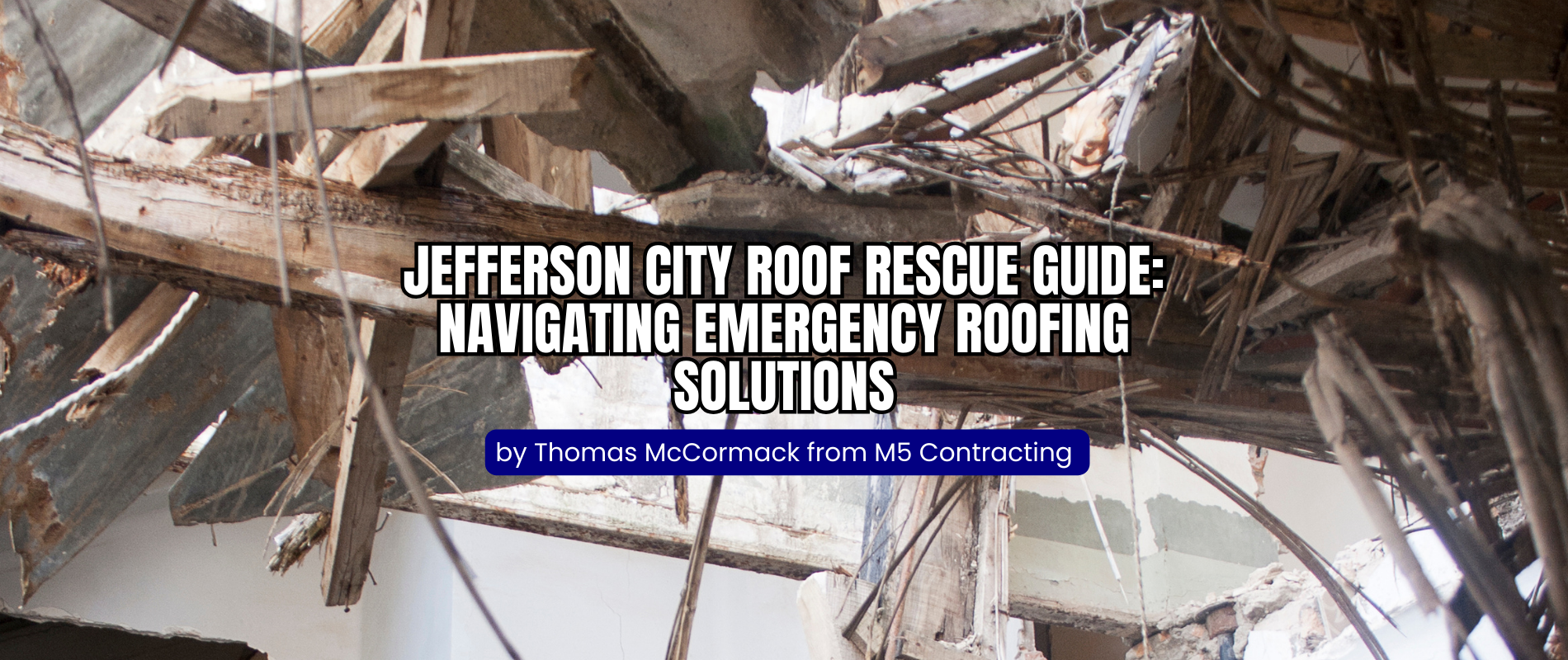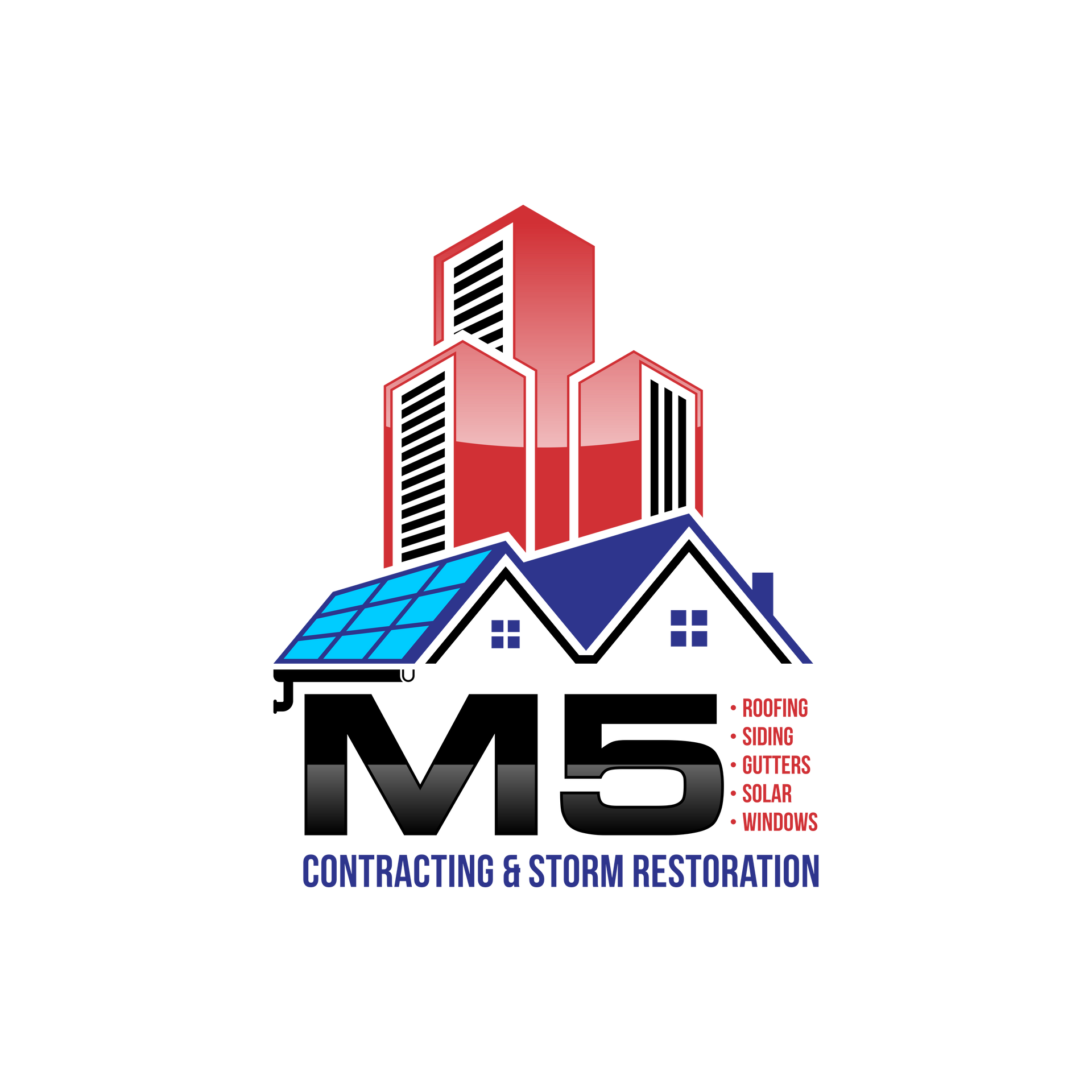
Roof Rescue Jefferson City Guide: Navigating Emergency Roofing Solutions When Disaster Strikes
Hello Jeff City! Thomas McCormack here, owner of M5 Roofing and Storm Restoration, and I'd like to welcome you to the Roof Rescue Jefferson City Guide! As a homeowner, one of the most daunting situations you may face is a roofing emergency. Whether it's a severe winter storm, a fallen tree, or a sudden leak, knowing how to handle these situations can save you time, money, and stress. In this comprehensive guide, I will walk you through the steps of identifying common roofing emergencies through the various seasons, taking immediate action, understanding the role of professional assistance, and implementing preventative measures for the future. So, let's dive in and get prepared to tackle any roofing disaster!
Identifying Common Roofing Emergencies
Roofing emergencies come in various forms, each requiring different approaches for resolution. By understanding the common types of emergencies, you can better determine the appropriate actions to take. Let's explore scenarios you may encounter throughout the seasons:
Spring and Summer:
Storm Damage: High winds, hail, and heavy rainstorms can wreak havoc on roofs during the warmer months. Damaged shingles, fallen tree branches, or even complete structural collapses are common outcomes of such disasters.
Water Leaks: A sudden water leak in your ceiling is a clear indication of a roofing problem. Whether it's damaged flashing, worn-out sealant, or missing shingles, these issues should be addressed immediately to prevent further damage.
Pest Infestation: Not all roofing emergencies are caused by natural disasters. Sometimes, pests like birds, squirrels, or rodents can find their way into your attic and cause damage to the roof structure or insulation.
Fall and Winter:
Ice Dams: As temperatures begin to drop in the fall, the formation of ice dams on your roof can pose a significant threat. Accumulation of ice along the eaves prevents melting snow from draining, causing water to back up under the shingles and potentially leading to leaks and structural damage.
Snow Load: In areas with heavy snowfall, the weight of accumulated snow on the roof can become a concern. Excessive snow load may strain the structural integrity of the roof, risking collapse. It's crucial to monitor snow accumulation and take preventive measures to avoid overloading.
Freeze-Thaw Cycles: Rapid temperature fluctuations, common in winter, can lead to freeze-thaw cycles. This process can compromise the roofing materials, causing them to contract and expand, resulting in cracks, leaks, and overall deterioration.
Condensation Issues: Cold weather can contribute to condensation problems in attics, leading to mold growth and structural damage. Proper ventilation and insulation are essential in preventing condensation-related roofing emergencies.
Understanding how to identify and address these season-specific roofing emergencies is crucial for effectively safeguarding your home throughout the year.

Swift Solutions: Your Action Plan for Tackling Roofing Emergencies Head-On
When faced with a roofing emergency, it's crucial to act swiftly. The longer you wait, the more extensive the damage can become. Here are some immediate steps you can take as a homeowner:
Ensure Safety: Before inspecting the damage or attempting any repairs, prioritize your safety and those around you. If the damage is significant or you are concerned that the damage poses a risk of collapse, evacuate the area and seek professional help immediately.
Document the Damage: Take photos or videos of the affected areas to provide evidence for insurance claims. Accurate documentation can help expedite the process and ensure proper reimbursement.
Temporary Repairs: If it's safe to do so, you can perform temporary repairs to prevent further damage. Cover exposed areas with tarps or use buckets to collect water leaks. However, keep in mind that these measures are only temporary, and professional assistance is still necessary.
Contact Professionals: Reach out to a reliable roofing contractor as soon as possible. Professional roofers have the expertise to assess the damage accurately and provide immediate solutions. They can also offer guidance on the necessary steps to take before their arrival.
Emergency Roofing Services: Inquire about emergency roofing services offered by professionals. Many roofing companies provide emergency response teams that can address urgent issues promptly. These services are designed to mitigate immediate threats and prevent further deterioration.
Secure Important Items: If safe to do so, try to secure important items within your home that may be at risk of damage from leaks or falling debris. This proactive step can help minimize potential losses during an emergency.
Communicate with Insurance: Contact your insurance provider to report the roofing emergency and initiate the claims process. Provide them with documented evidence of the damage, including photos and videos. Understanding your coverage and keeping open communication with your insurance company can facilitate a smoother claims process.
Stay Informed: Keep yourself informed about weather forecasts and updates, especially during seasons prone to storms or adverse weather conditions. Staying informed allows you to take preventative measures and be prepared for potential emergencies
Navigating Insurance Claims: Turning Roofing Emergencies into Stress-Free Solutions
Getting a handle on a roofing emergency can already be a stressful experience, and dealing with your insurance provider shouldn't amplify that anxiety. In this segment, I would like to shed light on six easy steps that homeowners, such as yourselves, can follow to simplify the process of restoring their homes to their pre-loss condition.
Step 1: Breathe
First things first, take a deep breath and remind yourself that everything is going to be okay. The first step in dealing with a roofing emergency is to remain calm and collected. This will allow you to think clearly, make better decisions, and communicate more effectively with your insurance provider.
Step 2: Document, Document, Document
I said it once, and I'll say it again. Grab your phone and start snapping those pics! Document the affected areas, the damage, and anything that might help tell the story. The more evidence, the better. These snapshots will be your trusty sidekick when it comes to proving your case.
Step 3: Reach Out ASAP
Don't be shy – reach out to your insurance provider as soon as possible. Quick communication is key. Report the emergency, provide them with the documented evidence you've gathered, and let them know you're on top of things.
Step 4: Ask Questions – You're in Control
Feeling unsure about anything? Don't hesitate to ask questions. You're in control, and you deserve to understand the process. Whether it's about the claims timeline, coverage details, or anything else, a little clarity goes a long way.
Step 5: Team Up with a Pro
Teaming up with a professional roofing contractor can ease the burden tenfold. Many of us are seasoned pros in dealing with insurance companies and can provide additional documentation and insights to support your claim. We can also help you navigate the process and ensure that you get the most out of your claim. Moreover, having a professional contractor by your side can be invaluable when dealing with adjusters. They speak the same language, understand the intricacies of roofing, and can effectively communicate the extent of the damage, ensuring that your claim accurately reflects the necessary repairs. This collaborative approach ensures a smoother experience throughout the entire restoration process.
Step 6: Stay Positive
It's easy to get discouraged when dealing with insurance companies, but it's important to stay positive. You may face some resistance from your insurance provider, but don’t let that discourage you. Keep in mind that they are a business, and their goal is to make money. If they can find a way to avoid paying out on your claim, they will. Understanding your coverage, and having all your documentation together along with a professional contractor on your side puts you in a better position to have your claim approved.

Seizing Control: The Blueprint for Proactive Planning and Home Security
While it's important to know how to handle emergency situations, proactive planning can help prevent them altogether. Here are a few additional preventative measures you can take to safeguard your home:
Regular Roof Inspections: Schedule annual inspections with a professional roofing company to identify potential issues before they escalate into emergencies. A trained eye can catch minor problems early, saving you from more significant damage down the road.
Routine Maintenance: Keep your roof in top-notch condition by engaging in routine maintenance practices. Regularly clean gutters to prevent clogs and water buildup, remove debris from your roof, and trim overhanging tree branches. These simple tasks can go a long way in minimizing the risk of damage during storms and adverse weather conditions.
Insurance Coverage: Ensure that your homeowner's insurance policy includes comprehensive coverage for a range of roof-related emergencies. Regularly review your policy to make any necessary adjustments based on changes to your home, ensuring that you have adequate coverage for potential issues.
Emergency Fund: Consider creating an emergency fund specifically designated for home repairs, including roofing emergencies. Having financial reserves in place can provide peace of mind and ensure that you're well-prepared to address unexpected situations without causing additional stress.
Proactive planning and preventative measures not only fortify your home against potential emergencies but also contribute to the long-term health and durability of your roof. By staying ahead of potential issues, you'll be better equipped to enjoy a secure and resilient home.
Facing Storms with Confidence, From Crisis to Calm
Emergency roofing situations can be stressful, but with the right knowledge and resources, you can navigate through them more effectively. By identifying common emergencies, taking immediate action, involving professional assistance and expertly dealing with insurance claims, as well as implementing preventative measures, you can ensure your home is prepared for any roofing disaster. Remember, safety should always be your top priority. Don't hesitate to seek professional help when needed. Stay proactive, plan ahead, and be ready to overcome any roofing challenge that comes your way!
YouGetARoof Articles and FAQ











